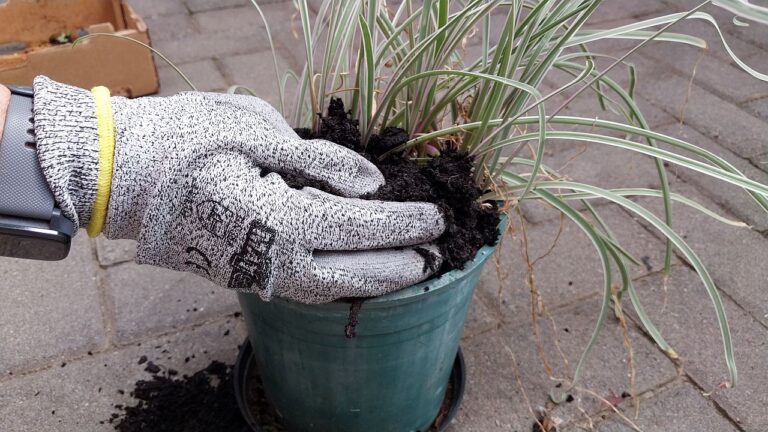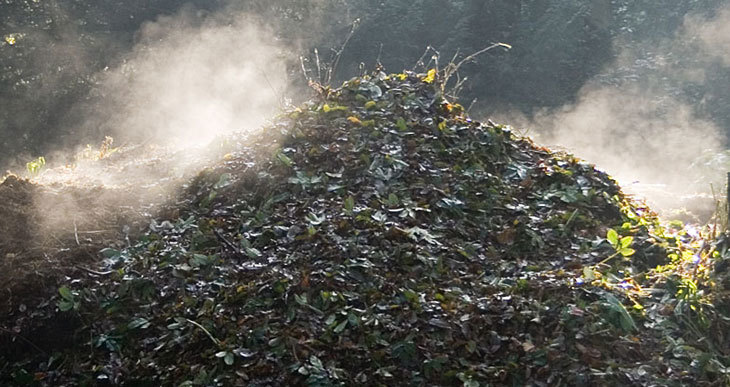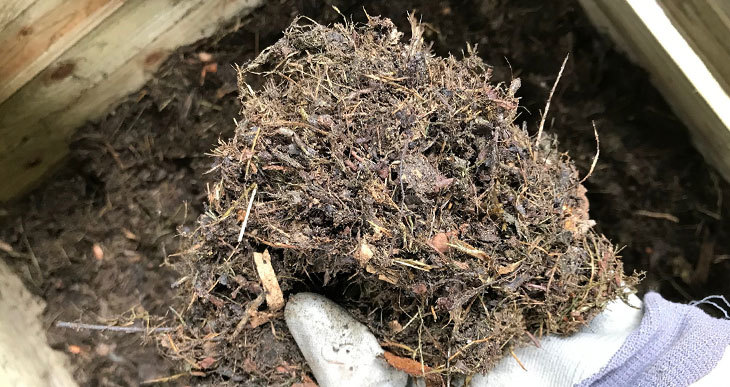How Much Compost Do I Need? (All The Answers)

Now that you’ve got some fabulous finished compost, can you fathom the different amounts of compost you need for every gardening situation?
This can get pretty confusing at times.
What if you need to add an inch, two, or four inches? How do you figure out the amount of compost you need? And what if you’re planting a new tree? Or maybe you just want to boost an existing vegetable garden.
This is the best guide you’ll find about the quantities of compost needed for various uses. Below I’ll show you how to find the amount of compost you really need and recommendations for different types of compost applications.
I’ll even point you to a helpful tool for calculating all your compost needs!
How Much Compost Do I Need To Add?
The first thing you should consider is what you want to use compost for?
Are you trying to improve lousy quality soil, or do you simply want to add a turf dressing to spruce up the grass in your backyard?
Each application requires a different amount of organic compost for the best results.
To gauge the proper amount of compost, you’ll also need to consider the state of the soil you want to mix it with. For example, poor-quality soil will need more organic compost to transform it into something beneficial for plants.
Finally, are you planting something new, or are you adding compost to a well-established garden bed? New plants generally benefit from using more compost than already rooted plants.
How Much Compost For Different Uses
You’ve probably guessed…
The compost application rates for different situations will depend on what you’re using it for…
Once you’ve established a few basic parameters, such as the existing soil conditions, and the intended use for compost, you’re well on the way to understanding how much compost you really need.
Below are some guidelines for a range of typical compost uses.
After you decide what depth of compost is best suited to your needs, use my compost calculator to estimate the volume of compost required.
How much compost for soil
For average soil, add ½ to 1 inch of compost. Spread this over the surface and dig it into the topsoil. Of course, this is assuming that your soil is of reasonable quality (not too sandy or filled with clay).
Remember, topsoil is a region up to 10 inches deep. So on average, you need to dig compost into the top 4-8 inches for the compost to become mixed with the root zone.
How much compost do I need for clay soil?

As a rule of thumb for clay soil, you should add 1 or 2 inches of compost amendment and mix it into the ground.
Clay soils are low in organic materials. As a result, they compact easily and can become waterlogged. Adding compost to clay soil improves the soil structure and helps get rid of these problems.
How much compost do I need for sandy soil?
For sandy soils, spread 3 inches of compost on the surface. Then and dig or till into the topsoil as an amendment.
Coarse compost is a good option because the woody components add structure and help consolidate the soil. Any bits of wood or twigs also continue to decompose over time and add all-important humus.
Amending soil with compost in this way will increase the drought resistance of your flowers and shrubs.
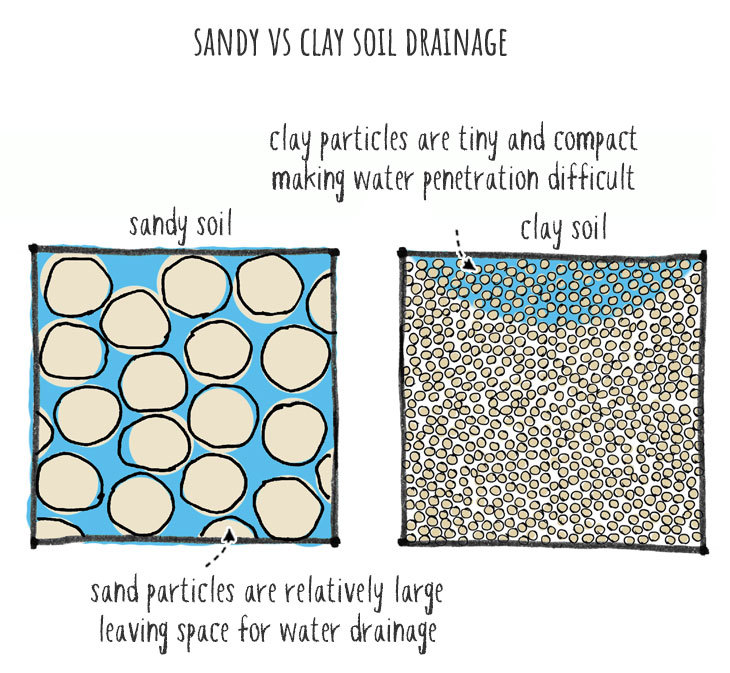
How much compost to add to a raised garden bed
For established raised beds, refresh the soil with a top-dressing of about 1 inch of compost once per year, preferably near or after the fall when plants seek nutrients. Rake this gently into the upper soil surface to avoid disturbing established beneficial organisms.
If you’re making a new raised bed, mix 2 to 3 inches of compost into the top layer of the soil before you begin planting. You can till this into the ground since this is new soil composition.
How much compost for a vegetable garden
Add 1 inch of compost to help replace nutrients and amend soil after a previous crop. If your soil is of poor quality or this is the first time you add compost for planting crops, you can add up to 4 inches of compost and dig or till this into the topsoil.
The amount you choose will vary depending on the quality of the soil.
It’s generally recommended to add compost to garden beds just before sowing seeds or adding seedlings. Like this, the nutrient release is at its best, and you create a good soil structure for the roots to take hold.
Always use well-matured compost for a vegetable patch.
related reading: composting for vegetable gardens
How much compost for a new lawn
Add about 1 to 2 inches of compost across the surface for new lawns. Then till into the topsoil to a depth of 4 to 8 inches. Then you can seed or lay sod for the new lawn.
Compost also makes an excellent turf dressing. The compost will help release nutrients and can also reduce moss growth. A sprinkling of compost every year will add vitality to the lawn.
If your lawn is already established, you can get by with just a ¼ inch of compost dressing raked over the surface. Make sure you sieve the compost first to remove any large undecomposed bits.
How much compost do I need for pots?

Add equal parts compost and good quality topsoil for pots and potted plants. Another option for a potting mix is 1 part compost, 1 part topsoil, and 1 part sand. The sand provides additional structure to help anchor new roots and let them breathe.
Your compost must be sieved carefully to use only the finely finished part.
Make sure you use well-matured compost. Active compost (compost that is still curing) can actually harm plants. This is because compost uses nitrogen during decomposition. As a result, it will take up all the available nitrogen and leave none for your potted plants (a situation known as nitrogen lockout).
Leaf mold is an ideal type of compost for potting because it generally needs to be left over a long time to mature and results in a fine crumbly texture.
You can vary the compost to soil ratio from around 20% to 50% maximum of compost content. If your pots are in a very sunny location or planted in clay pots that dry out quickly, more compost can help retain moisture.
How much compost for new trees or plants
New trees and bushes can be planted into a mix of soil and compost. Before planting the root ball, pre-mix the compost and soil using approximately 10% to 20% of added compost.
Freshly dug soil will settle over time, so plant your root ball higher than the surrounding ground to make allowance. Next, add some soil/compost mix to the hole, then plant the root ball firmly but gently using the remaining mixture.
How much compost for established trees or plants
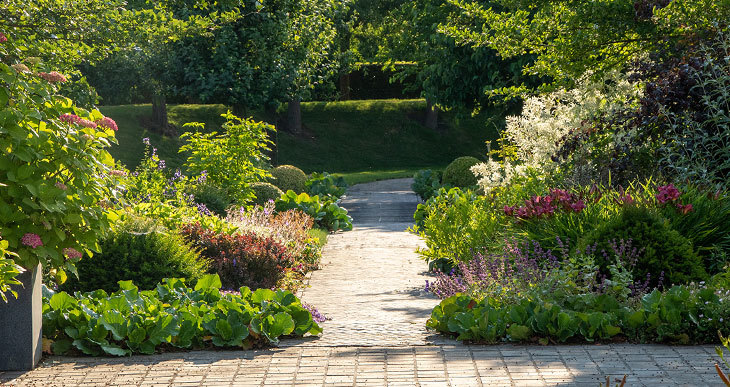
For established plants such as trees and shrubs, you can apply a top dressing of ½ or 1 inch of compost around the base of the plant. Then rake the compost into the topsoil.
You can work around the existing plants, digging the compost into the first few inches of topsoil, or use compost as a mulch. Leave a one-inch layer on the surface to help retain moisture and suppress weed growth.
How much compost for no dig
To begin a no-dig garden bed, you can add thick layers of compost, up to 6 inches, without preparing the underlying soil or garden. Even if there are existing weeds or other plants, there is no need to dig. The compost will suppress weed growth.
You can plant almost immediately into a system like this, but of course, it’s best to try and respect the timings that work best for the plants or veggies you want to grow.
What is the ratio of compost to soil?
Vegetable gardens, clay soils, or potted plants need different compost to soil ratios. These ratios can range from anything between 10 to 50 percent. Therefore, the correct ratio depends on how you want to put compost to use.
The above suggestions already give you a broad range of ideas about how much compost to apply to various uses.
But if you’re looking for a quick guide to ratios… here’s a table of typical uses:
Note: If viewing on phone, please swipe the table to scroll horizontally.
| Uses: | compost : soil ratio |
|---|---|
Potted plants | 20-50% compost (1 part compost and 4 parts soil up to 1 part compost and 1 part soil) |
New flower gardens | 20% compost (1 part compost and 4 parts soil) |
Clay soil | 30% compost (1 part compost 2 parts soil) |
Sandy soil | 40% compost (1 part compost to 1 ½ parts soil) |
Planting trees or shrubs | 10-20% compost (1 part compost to 4-5 parts soil) |
New raised beds | 30% compost (1 part compost 2 parts soil) |
Compost Coverage:
It can be helpful to know some standard guidelines for common units of measurement. For example, how much surface you can cover with a cubic yard of compost or how much you need for a 100-foot square surface.
This section answers some common questions of this type:
How many yards of compost do I need?
One cubic yard of compost will cover 324 square feet of the garden surface with 1 inch of compost. However, the depth of compost depends on the type of use. For example, newly planted shrubbery will require more compost than established shrubs.
Use the table below to see how many square feet of coverage you can get from a cubic yard of compost for various depths of application:
Note: If viewing on phone, please swipe the table to scroll horizontally.
| Depth of compost: | Square feet per cubic yard: |
|---|---|
½ inch | 648 sq. ft |
1 inch | 324 sq. ft |
2 inches | 162 sq. ft |
3 inches | 108 sq. ft |
4 inches | 81 sq. ft |
How much compost do I need per square foot?
Assuming you require a depth of one inch, you will need 0.08 cubic feet or 2.3 Liters of compost for every square foot of surface area.
For other depths of application, see the table below:
Note: If viewing on phone, please swipe the table to scroll horizontally.
| Depth of compost: | Cubic feet per square foot: | Liters per square foot: |
|---|---|---|
½ inch | 0.04 ft3 | 1.1 L |
1 inch | 0.08 ft3 | 2.3 L |
2 inches | 0.17 ft3 | 4.8 L |
3 inches | 0.25 ft3 | 7.1 L |
4 inches | 0.33 ft3 | 9.3 L |
How much compost for 100 sq ft
For coverage of 100 square feet, you will require a volume of 8.33 cubic feet or 236 liters of compost for 1 inch of depth.
You might need a lower or heavier application of compost according to your circumstances, so here is a table breaking down a range of quantities for a 100 sq foot surface area:
Note: If viewing on phone, please swipe the table to scroll horizontally.
| Depth of compost: | Cubic feet for 100 sq feet: | Liters for 100 sq feet: |
|---|---|---|
½ inch | 4.17 ft3 | 118 L |
1 inch | 8.33 ft3 | 236 L |
2 inches | 16.66 ft3 | 472 L |
3 inches | 25 ft3 | 707 L |
4 inches | 33.33 ft3 | 944 L |
How much compost per square meter?
Suppose you’re accustomed to a metric system. In that case, the following table sets out how much compost you need per square meter for a multitude of layer depths:
Note: If viewing on phone, please swipe the table to scroll horizontally.
| Depth of compost: | Cubic meters per sq meter: | Liters per sq meter: |
|---|---|---|
1 cm | 0,01 m3 | 10 L |
2,5 cm | 0,025 m3 | 25 L |
5 cm | 0,05 m3 | 50 L |
7,5 cm | 0,075 m3 | 75 L |
10 cm | 0,1 m3 | 100 L |
Calculating Your Compost Needs
All of the above rules of thumb are useful for determining how much compost is advisable for standard volumes and surface areas.
But if you’re struggling to understand how much compost is required for a specific set of conditions, I’ve created a tool to help you estimate your compost needs.
To quickly and easily calculate suitable amounts of compost, first read the above about how much compost is for different uses. Next, you need to know what depth of compost is the most appropriate. Then use this handy compost calculator to find the correct volume you need.



